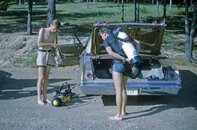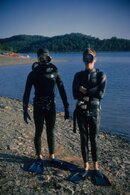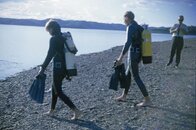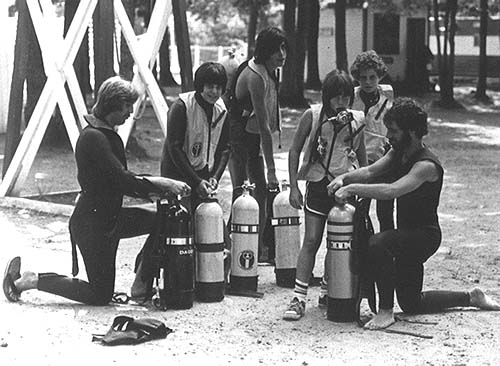Then as now, I am sure instruction quality varied widely from here is the book (and the book was the "New Science of Skin and Scuba Diving"), read it, thanks for stopping by to the training I got from one of the earliest NAUI instructors that began with pushups and lap swimming, one hour of lecture, two in the pool, twice a week for twelve weeks. We calculated tables, SAC rates, depth and bottom time over and over because then we dove mostly without an SPG and it was critical to learn how to know your air and time your dives vs. depth. I still do it to this day and rarely need to look at my SPG and then only to confirm what I already know.
We did buddy breathing drills, doff and dons and in the end did them with no masks and once they turned the lights off in the pool sos we did it all in the dark. There was also a Hell night that began with laps, then a doff and don, more laps and then buddy breathing and then more laps and then compute tables and then more laps and an end to end underwater swim and so on.
But diving was much more free and easy. Local diving in ponds, lakes and rivers was all an adventure. The Keys were an exotic destination. The biggest difference though I observe is that back then the majority of divers were young people, under 35 yo and today the majority of divers are old people, over 35 yo. Back then diving was a sport, today it is a relaxing hobby. Well, y'all can relax now, I will relax when I am dead, for now, it is GO TIME, no matter what I am doing. Relax my axx.
N
---------- Post added December 30th, 2012 at 12:36 PM ----------
Then, 1968, on my way down to our boat:

Now, 46 years active diver:

N
We did buddy breathing drills, doff and dons and in the end did them with no masks and once they turned the lights off in the pool sos we did it all in the dark. There was also a Hell night that began with laps, then a doff and don, more laps and then buddy breathing and then more laps and then compute tables and then more laps and an end to end underwater swim and so on.
But diving was much more free and easy. Local diving in ponds, lakes and rivers was all an adventure. The Keys were an exotic destination. The biggest difference though I observe is that back then the majority of divers were young people, under 35 yo and today the majority of divers are old people, over 35 yo. Back then diving was a sport, today it is a relaxing hobby. Well, y'all can relax now, I will relax when I am dead, for now, it is GO TIME, no matter what I am doing. Relax my axx.
N
---------- Post added December 30th, 2012 at 12:36 PM ----------
Then, 1968, on my way down to our boat:

Now, 46 years active diver:

N







